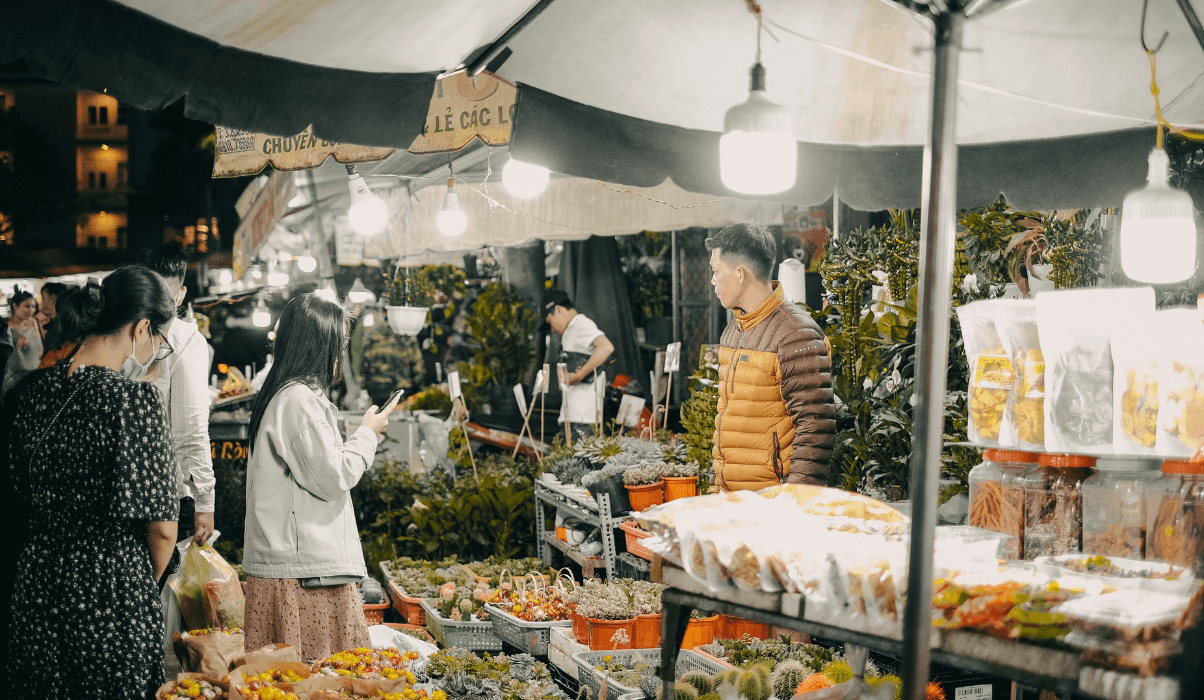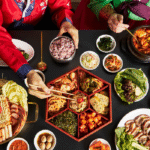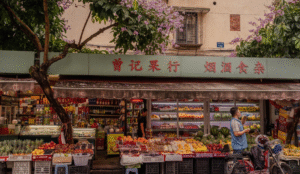Street Food Stall Owners: The Stories
In Malaysia, the vibrant buzz of a food stall isn’t just background noise—it’s the heartbeat of the nation. From early‑morning nasi lemak counters to midnight satay pits, these unassuming stalls tell powerful untold stories of passion, resilience, and community. Visit any hawker centre or street corner, and you’ll discover that behind every flame, every sizzle, and every plate is a real person—someone who’s kept the flame burning for decades.
In this feature, we step into the world of hawkers street food heroes: the everyday champions of Malaysian street food culture. We’ll trace their origins, their untold stories, and the quiet brilliance of each food stall that makes Malaysia a global foodie destination.
Frequently Asked Question (FAQ):
1. What makes Malaysian food unique?
Malaysian food is unique because it reflects a rich tapestry of cultures—Malay, Chinese, Indian, Peranakan, and Indigenous. This blending of traditions results in bold, flavorful dishes with layered spices, herbs, and cooking techniques. You’ll find creamy coconut-based curries, sambal-packed rice, and wok-fired noodles all in one street. Every dish tells a story of migration, adaptation, and unity—often served fresh from a humble food stall.
2. What makes street food unique?
Street food is unique because it’s made with heart, served fast, and rooted in tradition. Unlike restaurant meals, street food is often handcrafted by local vendors who have perfected their recipes over generations. In Malaysia, hawkers street food offers an up-close experience with the cook, using open-air kitchens, fresh ingredients, and unforgettable flavors—all without breaking the bank. It’s food with a soul.
3. What is Malaysian street food?
Malaysian street food is a flavorful, multicultural experience served from stalls, roadside carts, and open markets. It includes iconic dishes like nasi lemak, satay, rojak, char kway teow, and kuih. These foods are often cooked on the spot by skilled hawkers who represent the culinary heartbeat of the nation. Whether you’re in Kuala Lumpur or a small kampung, a food stall is where you’ll taste Malaysia’s true identity.
4. What are the problems with the food industry in Malaysia?
The Malaysian food industry faces several challenges:
- Rising costs of raw materials, especially after the pandemic.
- Labor shortages, as younger generations move away from traditional hawker life.
- Inconsistent food safety practices at unlicensed stalls.
- Over-commercialization, which can dilute the authenticity of heritage recipes.
Despite these issues, many passionate food stall owners continue to preserve culture through their dishes, fighting to keep the legacy of Malaysian street food alive.
5. What makes Malaysian culture unique?
Malaysia’s culture is uniquely diverse and harmonious. With influences from Malay, Chinese, Indian, Indigenous, and even colonial roots, the country celebrates festivals from multiple faiths, speaks several languages, and honors various customs—all under one flag. This diversity is most visible in everyday life—especially at the food stall, where a table may include roti canai, nasi lemak, and Chinese herbal tea, enjoyed by people of every background.

The Legacy of the Malaysian Food Stall
The term stall may sound small, but the impact is massive. Each stall is often run by families—sometimes even generations—who wake before dawn to craft dishes from scratch. Whether it’s char kway teow, assam laksa, or roti canai, they pour their heritage into every recipe, preserving culinary traditions in the most authentic form.
Take the likes of Selara Rasa Nasi Lemak, where the late Hassan Abdul Kadir perfected his signature food stall dish since 1998, even catching the attention of Brunei’s Sultan or think of Uncle Tan in Penang, whose char kway teow draws a fervent crowd—so legendary that when he took a break in 2018, Penangites felt the loss deep in their hearts.
Spices, Sweat & Tears: The Untold Stories Behind the Stall
Every stall carries its own untold stories of sacrifice, innovation, and survival. Hawkers often operate for decades under the radar, serving generations of loyal customers who return for their signature taste.
In “Local Legends,” a documentary series by 48 Production, four hawkers opened about decades of struggle—from dawn-to-dusk operations to sacrifice amidst pandemic lockdowns. Many street chefs recounted how their families worked alongside them, ensuring that Malaysian street food continues to thrive even in hard times.
One poignant line stood out:
“When a stall shuts down…someone has stopped cooking.”
—Kent Sim, co-director, Local Legends
That’s the essence of hawkers street food—connection and continuity.
From Humble Stall to Heritage Icon
Some food stalls have gained legendary status. Whether it’s Penang’s char kway teow or Selangor’s nasi lemak, they hold a special place in the heart of the nation. These stalls are more than places to eat—they are cultural landmarks, preserving the Malaysian street food identity.
Similarly, in KL, roadside nasi lemak stalls run by “aunties” set up at dawn are so celebrated locals would wait in their cars for them. It’s not just food—its nostalgia served hot, wrapped in banana leaves, and handed over with a smile.
Inside the Hawker Centre: Community in Motion
The modern food stall thrives in hawker centres—a hive of activity and multicultural energy. These spaces are where cultures converge and hawkers street food shines at its best.
Hawker centres emerged in the 1950s–60s to improve hygiene, yet the real draw has always been authenticity. In Penang and KL, relocating roadside stalls indoors sparked debate—some argue cleanliness kills charm, others welcome the structure. But regardless of the setting, the communal sharing of food and stories keeps Malaysian street food culture alive.
The Sweat Equity of Food Stall Owners
Operating a stall requires immense dedication. From early morning prep to late-night cleanup, it’s a physically demanding and emotionally taxing lifestyle—but filled with pride, love, and resilience.
In fact, hawker families are now passing down legacy through apprenticeships. Uncle Tan in Penang cooks alongside his son, teaching him the exact temperature of charcoal and the flick of the wrist needed for perfect char kway teow. These moments define the human side of every food stall.
Challenges in the Modern Age: Struggles Behind the Smoke
Despite their cultural significance, stall owners face growing challenges that threaten their future. Rising food costs, increased rental prices (especially in urban hawker centers), and long working hours are pushing many younger Malaysians away from the trade. The result? Fewer new hawkers street food heroes stepping forward.
Many stalls also lack formal recognition or benefits—no insurance, no paid leave, and often no retirement plan. It’s a life of pure passion, fueled by tradition rather than profit. As one stall owner, Kak Min from Ampang, puts it:
“This is more than a job. It’s a promise to my late father—to continue his recipe, and to serve our neighbors like family.”
These are the untold stories you never see when picking up your roti jala or nasi lemak bungkus in the morning. Every plate served comes with a side of personal history, love, and perseverance.
Modern Innovations: Keeping the Flame Alive
Many young Malaysians are now blending tradition with tech—offering food stall menus via social media, embracing digital payments, and going viral on TikTok while honoring their elders’ recipes.
Examples of Innovation:
- MakcikKitchen in Shah Alam now takes online pre-orders via Instagram, with weekend pop-ups featuring old-school kuih and modern twists like durian cheese tart.
- A group of Gen Z hawkers in Johor started “HawkerCloud,” a YouTube series highlighting the best hidden Malaysian street food stalls, attracting locals and tourists alike.
- Some stalls, like “Teh Tarik Bros” in Melaka, incorporate LED signage, contactless payment, and eco-friendly packaging—blending authenticity with modern expectations.
This new wave helps preserve the cultural backbone of hawkers street food, while attracting new generations of eaters and entrepreneurs. It’s no longer just about survival—it’s about redefinition.
Signature Dishes and Their Culinary Champions
Let’s spotlight some beloved dishes and the stall heroes behind them:
A beloved stall run by Kak Nor and her family for over 30 years. She still prepares the sambal herself at 3 a.m. each day. Her food stall is known for its signature sambal paru and consistent queues of loyal regulars. The stall has become synonymous with comforting, authentic Malaysian street food.
Cooking with a wok over firewood, Uncle Ah Meng uses his father’s 1950s recipe. The flavor-packed broth has made his stall one of the most iconic hawkers street food spots in George Town.
This humble stall sells only one thing: laksa made with hand-ground rice noodles and herbs from the garden. The stall’s fame has grown so much that locals say, “You haven’t visited Kelantan if you haven’t eaten Tok Yah’s laksa.”
These stalls aren’t just eateries—they’re untold stories cooked into every dish.
A Day in the Life of a Food Stall Owner
From 4 a.m. prep to midnight cleaning, owner’s life is an endless rhythm of labor and love. Many say it’s not just a job—it’s their legacy.
Recognizing Culinary Heroes
Programs like Bib Gourmand, local awards, and global food festivals are finally shining a spotlight on Malaysian street food legends. Recognition helps preserve the pride and stories they carry.
The term “hero” is often reserved for big names and fine dining chefs—but in Malaysia, some of the greatest culinary heroes run humble food stalls. Fortunately, they’re beginning to gain recognition:
- The World Street Food Congress has featured Malaysian vendors in global festivals.
- Local initiatives like “Gerai Legend” and “Hawker of the Year” awards spotlight exceptional hawkers who keep traditions alive.
- Even Michelin Guides are starting to list street vendors under its Bib Gourmand category, proving that flavor doesn’t need formality.
These acknowledgments are crucial—not just for business growth, but for validating the artistry behind Malaysian street food.
How You Can Support Food Stall Culture
- Buy local street food.
- Share their stories online.
- Respect their time and effort.
- Ask about their journey—they’ll be happy to share.
The Cultural Connection: Food Stalls as Living Heritage
In Malaysia, a food stall is not just a culinary setup—it’s a cultural artifact. These stalls preserve generational recipes, local languages, and even regional etiquette. Every dish served reflects centuries of migration, trade, colonization, and adaptation. From Chinese wok hei to Indian spices and Malay rempah blends, each plate at a food stall embodies multicultural harmony.
In places like Penang and Malacca, UNESCO-listed heritage zones, Malaysian street food isn’t just sold—it’s celebrated. Hawkers serve laksa or kuih with a sense of duty, knowing they’re feeding not just bodies but also preserving identity. When travelers ask questions or listen to the untold stories of how a sambal recipe came from a grandmother in Kedah, they help keep this heritage alive.
“When I teach someone how to make my mee goreng, I’m not just teaching cooking. I’m passing on my roots.”
– Aunty Saras, hawker in Brickfields, Kuala Lumpur
This cultural context elevates every bite into a meaningful connection between eater and maker.
Signature Traits of a Great Malaysian Stall
Not all stalls are created equal—but the best ones share a few distinct traits that every food lover learns to recognize:
- Authentic Recipes
The most iconic stalls resist shortcuts. Their sambal is slow-cooked, broths simmered for hours, and meats marinated overnight. These aren’t just habits—they’re rituals passed down from elders.
- Local Ingredients
Great hawkers street food doesn’t come from factory supplies. The best nasi dagang is made with hand-pressed coconut milk. The top satay uses free-range kampung chicken. Ingredients matter.
- Passionate Owners
You’ll feel it immediately—how the stall owner watches every plate served. The best stalls are run by people who love feeding others. Their stories shine through their food.
- Long Queues
It’s no secret. If locals are willing to wait, it’s worth it. A long queue is the ultimate stamp of approval for any Malaysian street food spot.
Food Stalls in the Digital Era
Modern technology is reshaping the way we discover and support food stalls:
- Food delivery apps like GrabFood and ShopeeFood now include traditional stalls, offering customers access to heritage dishes without leaving home.
- Social media lets hawkers share cooking videos, gain followers, and even go viral.
- Food vlogs on YouTube and TikTok introduce younger generations to traditional recipes through engaging, bite-sized content.
For example, “Mat Bond Satay” in Klang exploded in popularity after one viral TikTok clip showing their unique “grilled-to-smoke” satay technique. Their food stall went from local favorite to national star in a week.
This digital visibility helps hawkers compete with large chains—empowering the little guys to shine.
Street Food with a Twist: Fusion and Youth Creativity
Today’s generation of culinary creators are giving a fun twist to traditional Malaysian street food, keeping it fresh for modern palates:
- Teh Tarik Crème Brûlée – Served in bamboo cups at a fusion stall in Setia Alam.
- Sambal Pasta – A Gen Z chef in Ipoh combines aglio olio with hawkers street food sambal recipes.
- Korean-Malaysian Fried Chicken Stalls – Young hawkers blend gochujang with rendang spice to create bold flavor fusions.
This evolution doesn’t take away from heritage—it expands it. It opens doors for Malaysian flavors to compete internationally while preserving the soul of the food stall concept.
How Much Do Street Food Owners Make?
This is one of the most frequently asked questions—and the answer depends on location, dish, and daily foot traffic.
A high-traffic food stall in KL or Penang can earn anywhere from RM500 to RM2,000 per day. But that’s gross income—after deducting raw materials, gas, rent, and labor, profits can drop to RM200–RM600 daily.
For many hawkers, it’s not riches that keep them going—it’s pride.
“If I wanted easy money, I would’ve worked in an office. But nothing feels better than hearing ‘sedap gila, bang!’ from a regular customer,”
—Shafiq, food stall owner in Shah Alam
That joy—the emotional return—drives thousands of food vendors to fire up their grills every day, rain or shine.
Year-Round Food Stalls Highlights
Whether you’re planning a visit or exploring Malaysia’s food scene, these events celebrate the best in food stall culture:
- Penang Street Food Festival (December): Showcasing legendary hawkers, local performances, and night food markets.
- Ramadhan Bazaars (March/April): A month-long paradise of pop-up stalls selling the best in Malaysian street food.
- Putrajaya International Food Fest: Features cooking demos, hawker challenges, and heritage food showcases from all 13 states.
These festivals are the perfect place to meet the faces behind the food—and hear the untold stories firsthand.
Final Reflections: A Tribute to the Unsung Heroes
Malaysia’s food stall vendors are more than cooks. They are historians, cultural ambassadors, caretakers of flavor, and frontline workers of tradition. Their kitchens are open-air altars where smell, taste, and memory come together.
If there’s one thing you take away from this article, let it be this:
The next time you eat from a food stall, thank the vendor. Not just for the food, but for carrying the untold stories of a nation—through burning charcoal, weathered hands, and humble smiles.
Bonus Tips for Food Stalls Lovers
- Bring cash – many stalls are still cash-only.
- Go early or late – beat the crowds and get the freshest servings.
- Try something new – each stall often has a specialty you can’t find elsewhere.
- Chat with the owner – they may share a recipe tip or life story that adds more flavor than the food itself.





